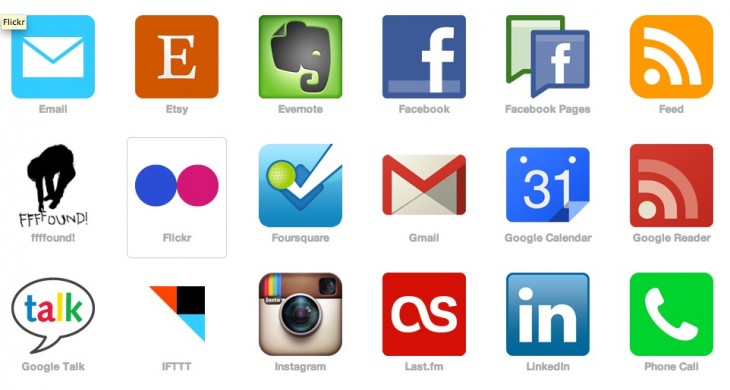
Today, IFTTT is announcing a Series A round of $7M that is led by Andreessen Horowitz, with NEA and Lerer Ventures participating. The round will help IFTTT to expand its staff, and work towards building out its service into a platform.
It’s also bringing on Andreessen Horowitz partner John O’Farrell as a board member.
A new sports partnership is on the horizon for IFTTT, as its efforts with ESPN surrounding the olympics ended up being fairly popular.
The plans for 2013 also include new channels, new ways to connect services including expanding from one-to-one to one-to-many connections, which could allow for some really cool actions. An IFTTT mobile app is also coming in the new year, as well as a revamped website that is friendly in mobile browsers.
I’m a relatively unabashed fan of the Internet glue service IFTTT. It’s a clever utility that allows you to hook various services up to work together, even though they’re sitting in their own little silos.
I had a chance to speak with both O’Farrell and IFTTT CEO Linden Tibbets about the platform’s plans for the future, and why AH felt that it was the kind of company it was looking to fund.
“We’re always looking for companies with compelling founders and a big product vision,” O’Farrell told me. The firm was impressed by the progress that IFTTT had made so far, with what it calls a ‘tiny’ amount of money. IFTTT received $1.5M in seed funding in January of this year.
O’Farrell says that the decision to fund IFTTT was made easier because the results of their due diligence calls were far more positive than they usually see. In their calls and meetings with developers about the product, the feedback on both the product and the team was incredibly positive. This, along with the fact that the scope of what AH sees IFTTT’s possibilities to be, made it a good bet.
When I asked Tibbets about the service’s immediate plans for the money, he said that doubling the size of the current team was a priority. They’re also working towards their vision of finding ways to simplify the ‘recipes’ that IFTTT uses to connect various services.
Those recipes are at the heart of how IFTTT works. Basically, you pick a channel, which is a simple conduit to a data feed or API. That channel is then combined with a trigger to create an automated action. For instance, every time a company like Apple issues a press release, I get a text message sent to my phone. Another neat recipe allows people to send photos shot on Instagram to their Dropbox folder automatically.
Think of IFTTT as a tool that allows users to tap into their data silos and pour that data into the mugs of their other Internet services.
These kinds of actions are familiar to developers that work with this kind of thing, but IFTTT’s cleverness comes in the way that it boils them down so that they’re simple and easy for even ‘regular’ people to use.
O’Farrell says that this kind of leverage of the APIs available for internet services like Facebook, Twitter, Instagram and dozens more gives IFTTT a unique position. Part of that is the expansion into physical products, sometimes called the ‘Internet of things’. As more of our devices get connected to the internet
It has the potential to act as a translator between larger companies like Sharp, Phillips, Sony and others that are creating Internet-connected devices and those services. A service layer that lets them not worry about the nuts and bolts of making their new LED lightbulbs work with services like Twitter.
A simple, consumer-friendly service that takes on the task of connecting the silos of our Internet lives so we, or even the services, don’t have to.
This works on many common consumer-friendly levels as well. As the sheer number of services available blossom, it’s impossible for IFTTTT to add new channels fast enough. With that in mind, says Tibbets, they’re working to build an IFTTT platform that will allow developers to build their own channels to support the services that they’re coding for.
This should explode the choices for consumers, and make taking advantage of IFTTT’s ‘glue’ much easier for services as well.
Image Credit: Mario Tama/Getty Images
Get the TNW newsletter
Get the most important tech news in your inbox each week.






